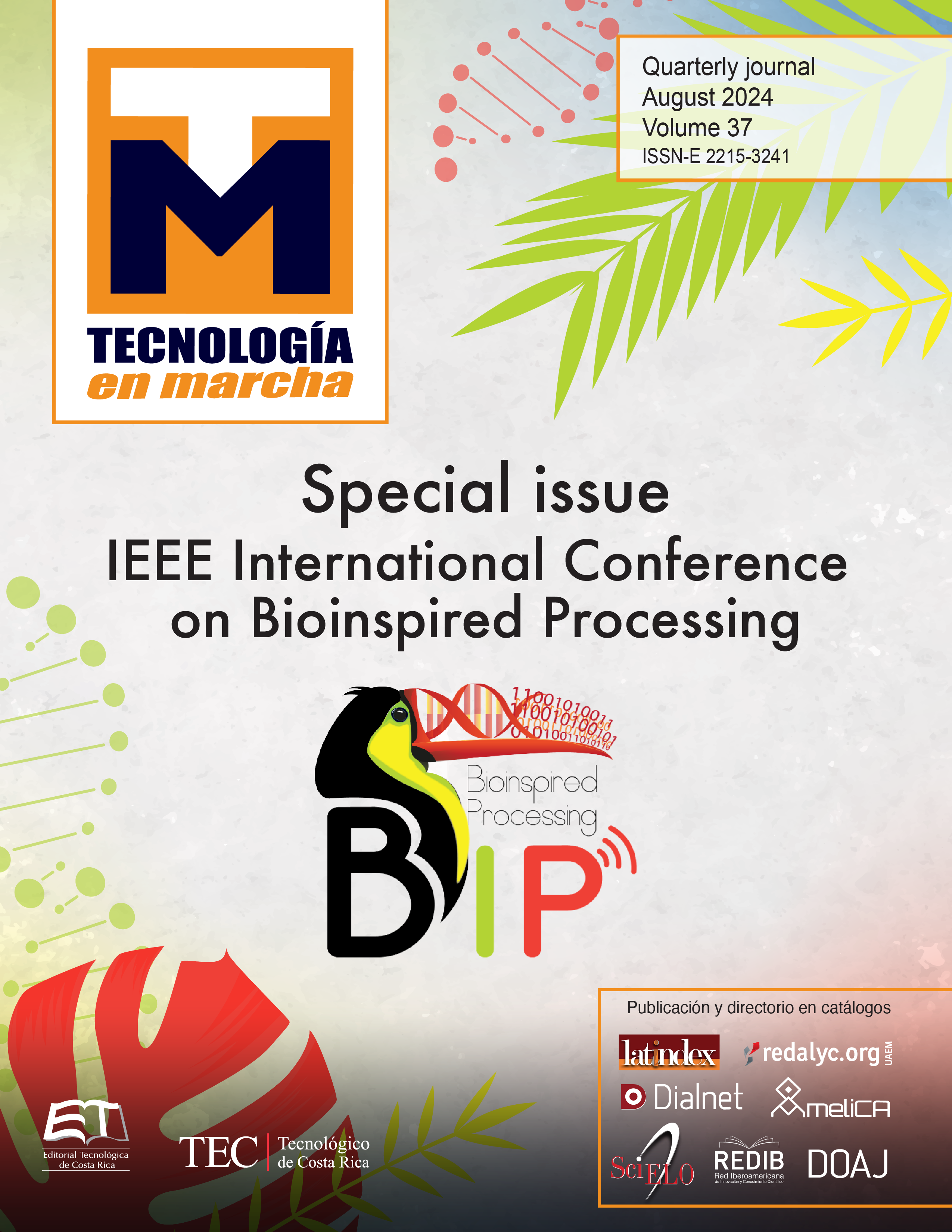Clustering of cantons in Costa Rica based on interest variables during the beta variant of Covid-19
Main Article Content
Abstract
The study of case behavior and the analysis of bioindicators are relevant and important for
decision-making by health authorities worldwide, related to the Covid-19 pandemic. Thus,
numerous investigations have been carried out around the world to understand this phenomenon,
its variants, and its primary impacts on population health. In this study, a cluster analysis was
conducted based on the variables of mortality rate, morbidity rate, and fatality rate, along with
cantonal geographical density, for the period of the beta variant in Costa Rica, corresponding
to the months from February to June 2021. Therefore, a total of three methods were chosen
to obtain groups: k-means, k-medoids, and fuzzy methods; as well as two types of distances:
Euclidean and Manhattan. Additionally, the sum of squares within groups and the Dunn index
were used to validate the formation of the clusters. It was identified that the method and distance
that formed the most compact cantonal clusters with lower intragroup variability were k-medoids
and Manhattan, respectively, due to their greater robustness against extreme values. Among
the formed groups, cluster 1 has a moderate impact of the pandemic during the specified
variant, while groups 2 and 3 have low and high impacts, respectively. Moreover, groups 1 and
2 are predominantly composed of cantons outside the Greater Metropolitan Area, in contrast to
the third group. This analysis provides valuable insights for health authorities in understanding
the impacts of the Covid-19 pandemic in Costa Rican regions and aids in the development of
targeted strategies for effective management.
Article Details

This work is licensed under a Creative Commons Attribution-NonCommercial-NoDerivatives 4.0 International License.
Los autores conservan los derechos de autor y ceden a la revista el derecho de la primera publicación y pueda editarlo, reproducirlo, distribuirlo, exhibirlo y comunicarlo en el país y en el extranjero mediante medios impresos y electrónicos. Asimismo, asumen el compromiso sobre cualquier litigio o reclamación relacionada con derechos de propiedad intelectual, exonerando de responsabilidad a la Editorial Tecnológica de Costa Rica. Además, se establece que los autores pueden realizar otros acuerdos contractuales independientes y adicionales para la distribución no exclusiva de la versión del artículo publicado en esta revista (p. ej., incluirlo en un repositorio institucional o publicarlo en un libro) siempre que indiquen claramente que el trabajo se publicó por primera vez en esta revista.
References
G. L. Vasconcelos, A. A. Brum, F. A. Almeida, A. M. Macêdo, G. C. Duarte-Filho y R. Ospina, «Standard and
Anomalous Waves of COVID-19: A Multiple-Wave Growth Model for Epidemics,» Brazilian Journal of Physics,
pp. 1867-1883, 2022.
J. L. Jacobs, G. Haidar y J. W. W. Mellors, «COVID-19: Challenges of Viral Variants,» Annual Review of
Medicine, vol. 74, pp. 31-53, 2023.
N. Pearce, J. P. Vandenbroucke, T. J. VanderWeele y S. Greenland, «Accurate Statistics on COVID-19 Are
Essential for Policy Guidance and Decisions,» AJPH, vol. 110, nº 7, pp. 949-951, 2020.
Universidad de Costa Rica. Centro de Investigación Observatorio del Desarrollo, «Costa Rica,» 30 05
[En línea]. Available: https://app.powerbi.com/view?r=eyJrIjoiMjU3M2NkNjQtMGIyOS00ZjRmLWE3NjYtNDE2OWNkZjIxZTdjIiwidCI6ImFkNjNmZDZmLWE4OTctNDljZS1hZWU5LTRmYzYxNzY1NjY4YSJ9&pageNam
e=ReportSection. [Último acceso: 10 09 2023].
Instituto Nacional de Estadística y Censos, Costa Rica «Estadísticas demográficas. 2011 – 2025. Proyecciones
nacionales. Población total proyectada al 30 de junio por grupos de edades, según provincia, cantón, distrito
y sexo,» [En línea].
F. Klawonn, R. Kruse y R. Winkler, «Fuzzy Clustering: More than just fuzzification,» Fuzzy Sets and Systems,
vol. 281, pp. 272-279, 2015.
R. C. Team, R: A language and environment for statistical computing, Vienna, Austria: R Foundation for
Statistical Computing.
Suwanda, R., Syahputra, Z., y Zamzami, E. M. «Analysis of euclidean distance and manhattan distance in
the K-means algorithm for variations number of centroid», In Journal of Physics: Conference Series, vol 1566,

